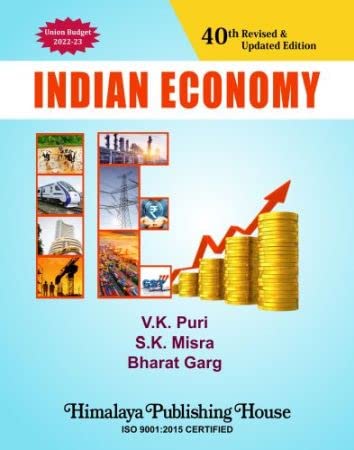Indian Economy (Its Development Experience)
Availability :
In Stock
₹ 783.75
M.R.P.:₹ 825
You
Save: ₹41.25 (5.00% OFF)
(Inclusive
of all taxes)
Delivery:
₹ 0.00 Delivery charge
Author:
Misra & Puri
Publisher:
Himalaya Publishing House
Edition:
14th Edition
ISBN-13:
9789355964236
Publishing Year:
2022
No. of Pages:
852
Weight:
1 kg 582 grm
Language:
Unknown
Book Binding:
Paperback











